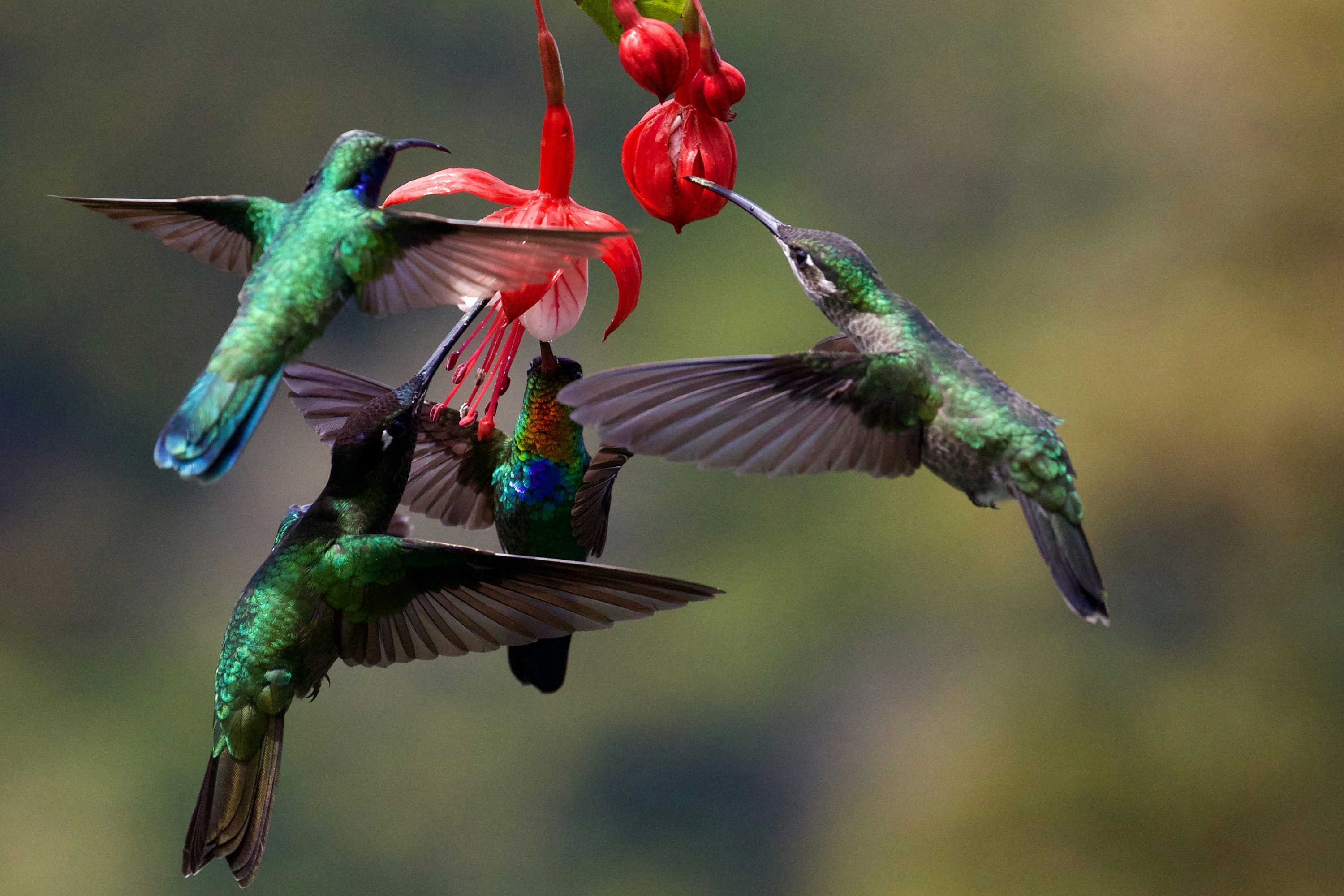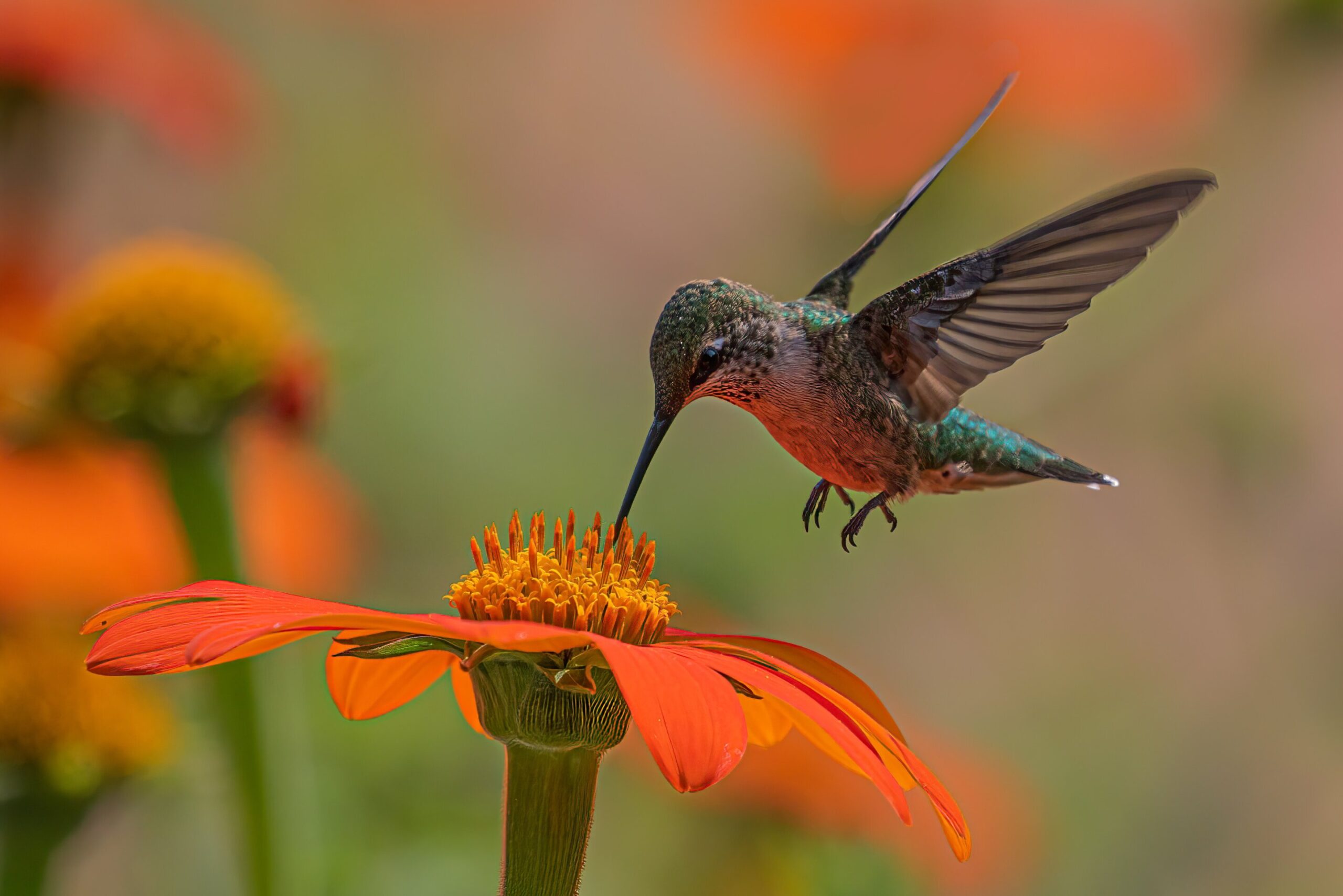Hummingbirds play a crucial role in pollination, contributing significantly to the diversity and health of various ecosystems. These tiny, colorful birds are known for their ability to hover in mid-air and extract nectar from flowers using their long, slender bills and specialized tongues. As they feed on nectar, hummingbirds inadvertently transfer pollen from one flower to another, facilitating the process of pollination. This article explores the unique role that hummingbirds play in pollination and their impact on plant biodiversity.
The Anatomy of a Hummingbird
Hummingbirds are equipped with several adaptations that make them efficient pollinators. Their long, slender bills allow them to reach deep into flowers to access nectar, while their specialized tongues can extend and retract rapidly to lap up the sugary liquid. Additionally, hummingbirds have keen color vision, which helps them locate brightly colored flowers that signal the presence of nectar.

Hummingbirds as Pollinators
As hummingbirds visit flowers in search of nectar, they inadvertently brush against the flower’s reproductive structures, such as stamens and pistils, picking up pollen in the process. When they visit another flower of the same species, they transfer this pollen, facilitating cross-pollination. This process is essential for the reproduction of many plant species, as it leads to the formation of seeds and fruits.

Plant Adaptations for Hummingbird Pollination
Many plant species have evolved specific adaptations to attract hummingbirds as pollinators. These adaptations include producing nectar-rich flowers with bright colors, such as red, orange, and pink, that are easily visible to hummingbirds. Additionally, some flowers have tubular shapes that are well-suited for the long bills of hummingbirds, ensuring efficient nectar extraction and pollen transfer.

Impact on Plant Biodiversity
The role of hummingbirds in pollination is vital for maintaining plant biodiversity in various ecosystems. By facilitating cross-pollination, hummingbirds contribute to genetic diversity within plant populations, which is essential for the adaptation and survival of plant species in changing environments. In regions where hummingbirds are abundant, their presence can influence the distribution and abundance of plant species that rely on them for pollination.

Conservation of Hummingbirds and Pollination
Given the importance of hummingbirds in pollination, conservation efforts are crucial to ensure their continued role in maintaining plant biodiversity. Protecting habitats that support hummingbird populations, planting native nectar-rich flowers, and reducing the use of pesticides are some of the ways to support hummingbird pollination. By safeguarding hummingbird populations and their habitats, we can help preserve the delicate balance of ecosystems that rely on these tiny but mighty pollinators.

Conclusion
In conclusion, hummingbirds play a significant role in pollination by transferring pollen between flowers as they feed on nectar. Their unique adaptations and behaviors make them efficient pollinators for many plant species, contributing to the diversity and health of ecosystems. Understanding and appreciating the importance of hummingbirds in pollination can help guide conservation efforts aimed at protecting these remarkable birds and the plant species that depend on them for reproduction. By working together to conserve hummingbirds and their habitats, we can ensure the continued success of pollination processes and the preservation of plant biodiversity for future generations.

Leave a Reply